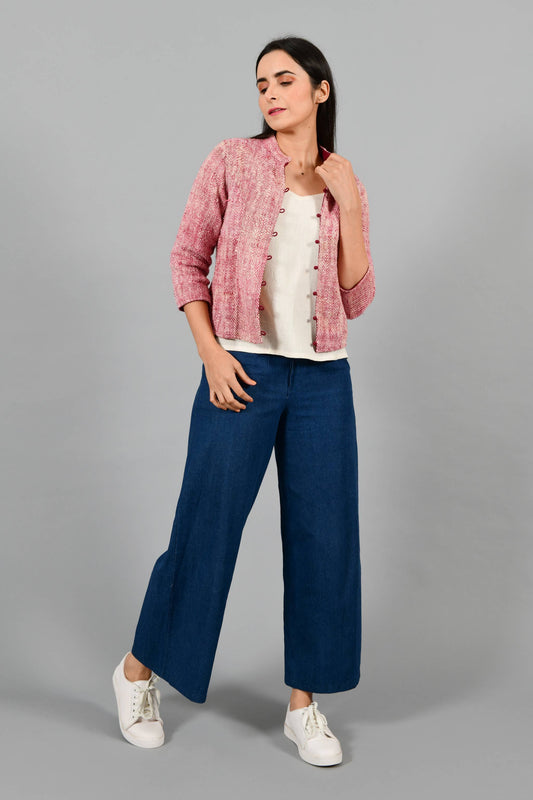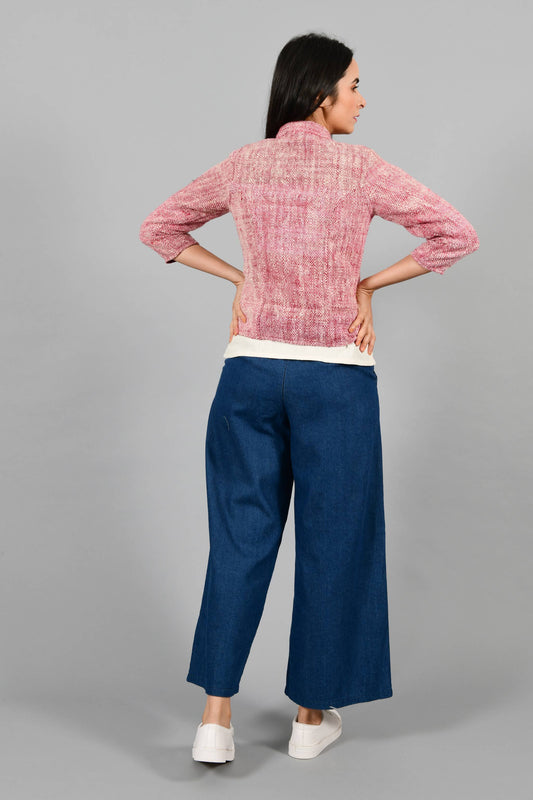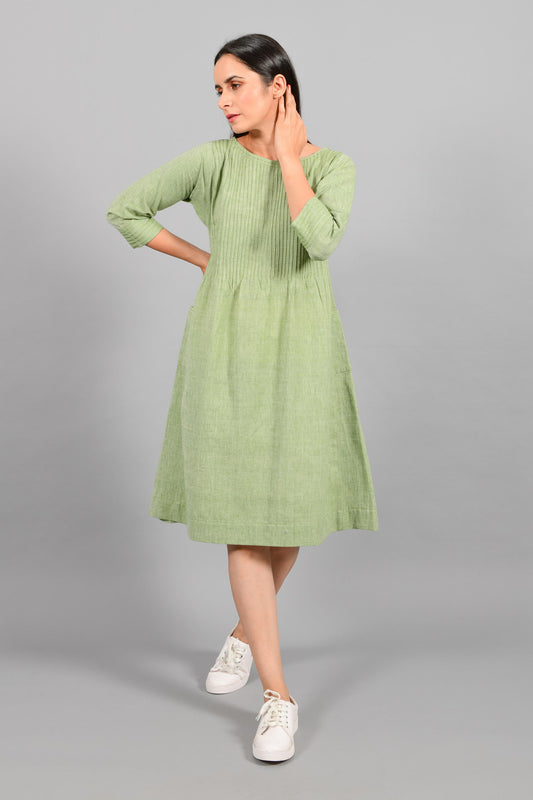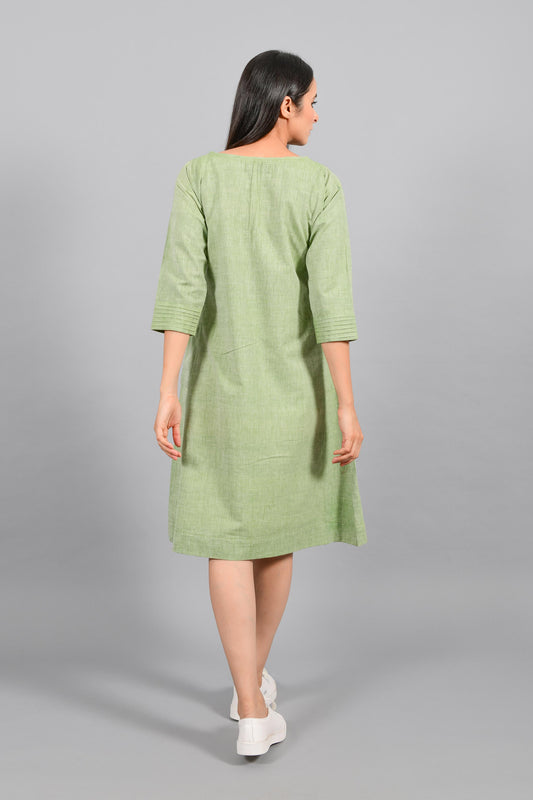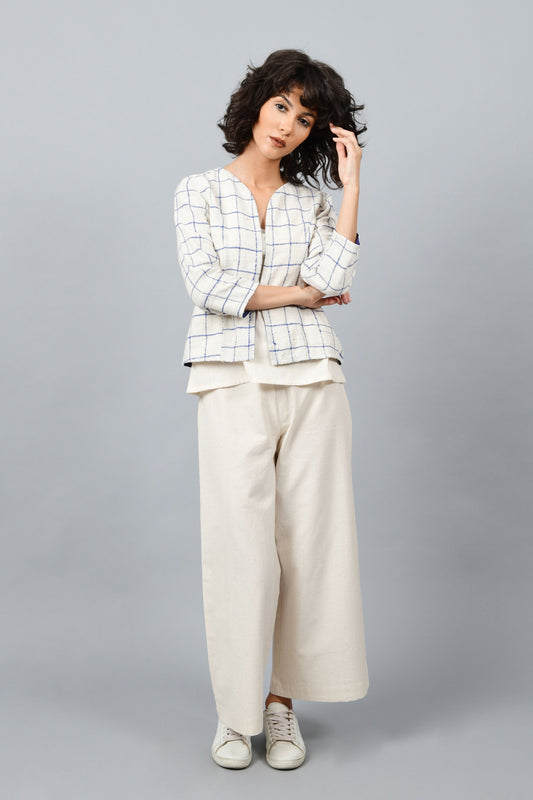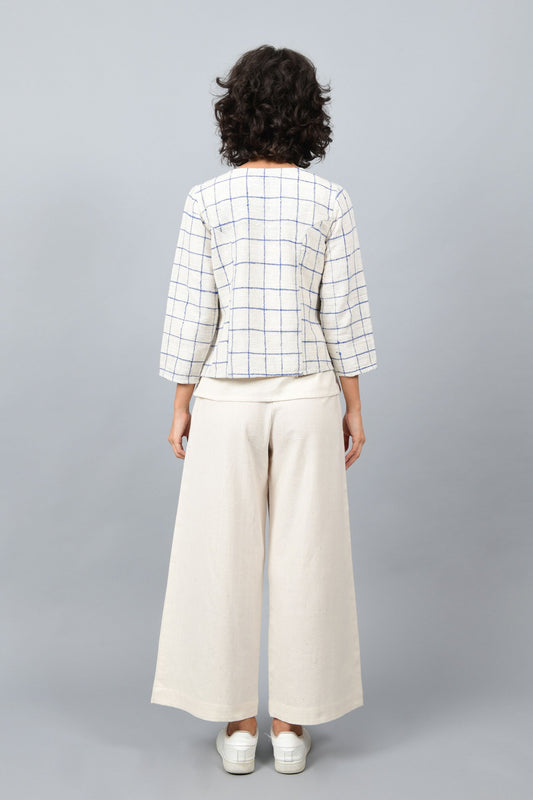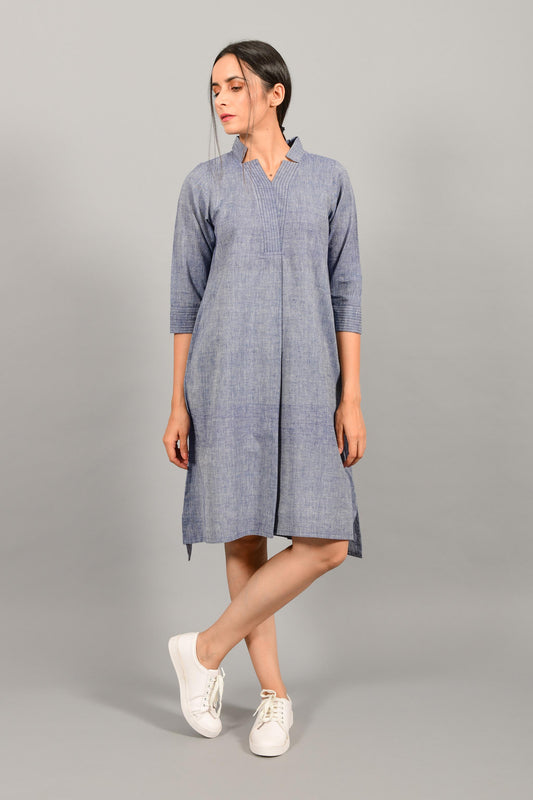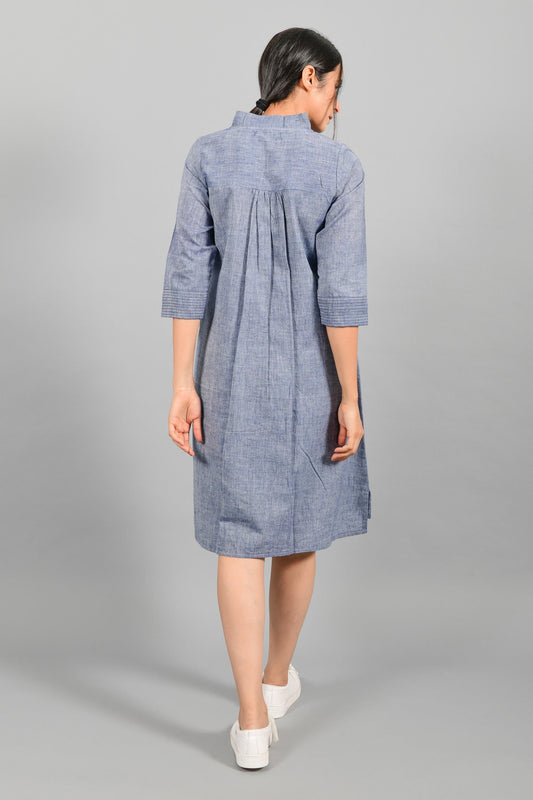
In the monsoon of 2017 we were gearing up for an adventure in the rural bylanes of West Bengal. Having never seen abundant rains in Rajasthan, we were actually looking forward to spending the monsoon in Bengal.
Firmly believing that it would only take us a week’s stay to get our work done, we packed our bags and left for Nabadwip, also known as the 'The Oxford of Bengal'. Once there, we were excited to get started but we got a call from our weaver that it was raining heavily and the pit-looms were water logged and we would have to pause until it stopped raining. What was supposed to take a week was going to take three weeks.
Check out our collections made from fabrics from West Bengal here.

We had almost planned to handover our designs and leave back for Jaipur when our master weaver asked us to come over to his brother’s place, who had floor handlooms at his home. Renewed with excitement we left for his village in a bus (that broke down enroute). At his home, in a room full of colorful hanks, we exchanged notes on the quality, colours, techniques and designs we wanted and when we seemed done, they asked us to have food with the family. We sat down with his family and his mother greeted us with a warm smile and served us a plate with rice neatly piled in center with an assortment of vegetable, fish curry, homemade chips and some sort of pakodas (fritters) that looked interesting. We were too hungry to ask questions so we thanked her and dug our hands into the rice and gravy. Feeling of having that food with that family and the sound of rain on the tin roof was heavenly, but the pakodas were even more heavenly. On inquiring, we learnt that our master weaver's mother had made 'Macher Dimer Bora' (pakodas from fish eggs) for our visit, something that we didn’t even know existed.

This trip turned into a trip of firsts. We had fish egg pakodas, got our first cane umbrella from a local umbrella shop, almost saw a dolphin (that is a story for another time) and witnessed delay in work due to water logged pit-looms. But when we came back after three weeks, we had warmed up to the handlooms and the weavers like never before. Maybe it was the rains, maybe it was the people and place and the appreciative culture of West Bengal, we became more sensitive to human condition and the Indian handloom sector. And this sensitivity and understanding is what drives us and continues to grow till this day.

